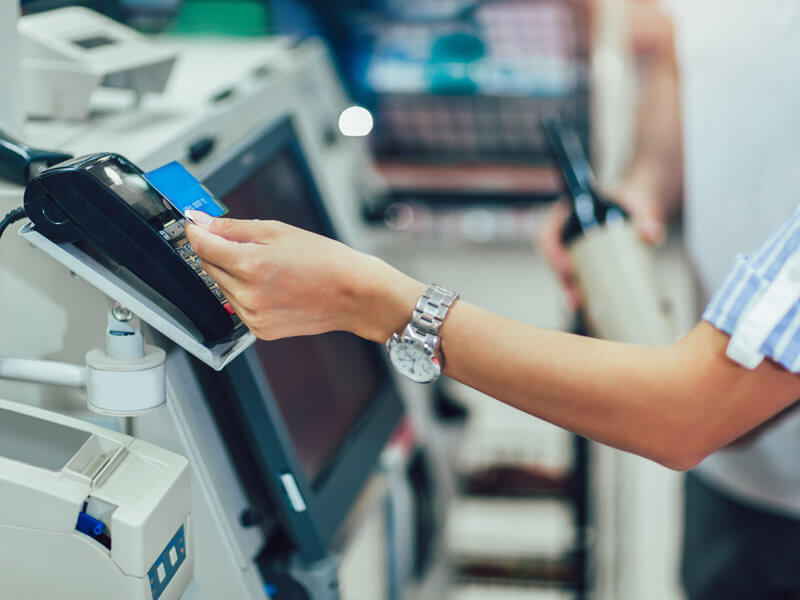One of the biggest complaints consumers have about the in-store retail experience is long checkout lines. As a result, consumer interest in technologies that allow them to bypass checkout lines is high. In the article “Self-Checkout is Changing the Retail Landscape,” digital analyst firm eMarketer cites a survey that found 71% of consumers were interested in scan-and-go apps and 61% were interested in unmanned stores.
Based on that data, it shouldn’t come as a surprise that ResearchandMarkets.com forecasts a 10.2% compound annual growth rate for the self-checkout market between 2020 and 2025.
These technologies can, however, expose retailers to an increased risk of shrinkage. To mitigate this risk, stores using autonomous or self-checkout must typically beef up their retail security systems with additional cameras and supporting systems to deter misuse of the checkout systems. Some are even using artificial intelligence to enhance the ability of security systems to detect fraud at checkout.

The Self-Checkout Effect on In-Store IT Systems
This trend shows one example of the digital transformation driving the continued expansion of in-store IT. The days when stores could operate off just a single server and router sitting on a desk in a back room are over. Today, the technology required to support retail stores with self-checkout and enhanced security is looking more and more like a small data center.
One of the keys to managing this increasing complexity is ensuring adequate capacity, reliability and intelligence in the infrastructure that supports these retail IT systems . Perhaps the most critical piece of IT infrastructure is the uninterruptible power supply (UPS).
The UPS provides power continuity to ensure network connectivity and critical applications such as self-checkout and security systems are available when needed. It does this by providing a source of backup power that enables IT systems to continue functioning when utility power is interrupted, and conditioning the power coming from the utility to eliminate the spikes and sags that can damage or disrupt IT equipment operation. A UPS can help reclaim the would-be-abandoned baskets at checkout in case of an outage.
The [Backup] Power to Transform
Having the right UPS systems in place across the retail network does more than just ensure the highest possible availability of IT systems. It also ensures new technologies can be added with minimal disruption and enables centralized visibility into distributed retail locations. When selecting a UPS system for a retail store, consider the following factors:
- UPS Capacity: The required capacity of a UPS system is determined by the load of the equipment being supported, the UPS output power factor, and future expansion plans. UPS capacities are typically specified in terms of volt-amps, but most manufacturers also show capacity in terms of watts. For example, 3000 VA / 2700 W. The UPS power factor describes the maximum active power the UPS can deliver by design and can range from as low as .6 to as high as 1. With a power factor of .8, a 3000 VA UPS has an actual capacity of only 2400W. With a power factor of 1, or unity, the same capacity UPS would support 3000W.
When selecting a UPS that will deliver adequate capacity, a good rule of thumb is to multiply the total wattage of the IT equipment being supported by 1.2 (assuming a unity power factor) to minimize the risk of overload. The exception would be if additional technology systems, such as autonomous checkout, will be added in the near future. If so, estimate the consumption of those systems and create a plan for accommodating the additional capacity, either by designing extra capacity into the UPS or planning for additional UPS units. - UPS Topology: The ability of the UPS to deliver clean, consistent power to the equipment it supports is determined by the “topology” or internal design of the system. Three main topologies are used in UPS systems for retail applications: standby, line interactive and online double conversion. If the load is under 1500 VA, a standby UPS provides a good low-cost option for POS systems requiring lower power capacity. If incoming power is relatively clean and stable, a line interactive UPS may provide adequate protection. When power quality is poor, a double conversion UPS may be required as it protects against more types of power disturbances than a line interactive UPS and does not rely on the battery system for power conditioning.
- UPS Battery Runtimes: UPS systems include a battery to provide continuous power to IT equipment in the event of a utility disruption. With many retail applications not supported by a backup generator, the UPS battery system determines how long equipment and applications can continue to function in the event of an outage. Batteries are often considered the “weak link” in the critical power system in that their performance naturally degrades with time and usage. Monitoring battery performance is highly recommended to ensure batteries provide the required capacity and runtime when needed. Also, consider using lithium-ion batteries in place of traditional lead-acid batteries as they can deliver a much longer lifespan, reducing the frequency of battery replacements.
- UPS Connectivity: In a distributed IT environment such as retail, you’ll want a way to remotely monitor and manage your IT infrastructure. UPS systems from most major manufacturers can be purchased or retrofitted with communication cards that enable connectivity through various platforms for remote monitoring and management. You can also connect temperature and humidity sensors to the UPS, or a power distribution unit, to enable remote monitoring of environmental conditions. UPS batteries are particularly sensitive to temperature. For every 8.3°C (15°F) above the ambient operating temperature of 25°C (77°F), battery life will be reduced by 50%.
- UPS Service and Maintenance: An additional factor that should be considered is how UPS service and battery replacements will be handled. Most retailers aren’t comfortable having store personnel perform even the simplest service tasks, so it’s a good idea to prepare for service before it is required. When selecting a service provider, evaluate their capabilities in proximity to the location of your stores. Not all vendors have fully-developed service organizations that can provide local, time-sensitive support in all areas.
There is a lot to think about when selecting IT infrastructure for evolving retail locations to make sure your systems run smoothly while preventing retail shrinkage. Your local Vertiv partner can help you select the systems that are right for your current – and future – requirements. To find the partner nearest you, visit our partner locator.






